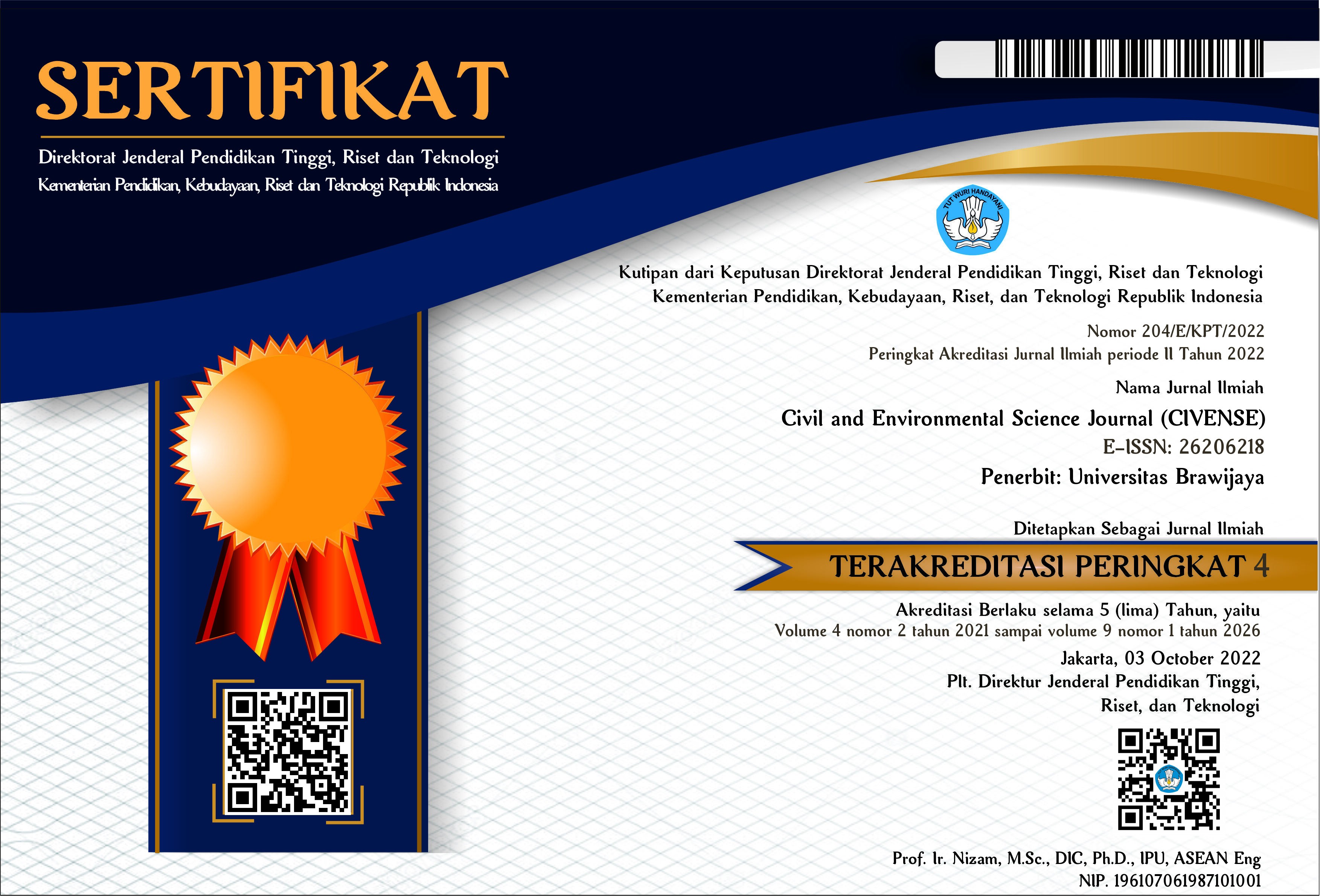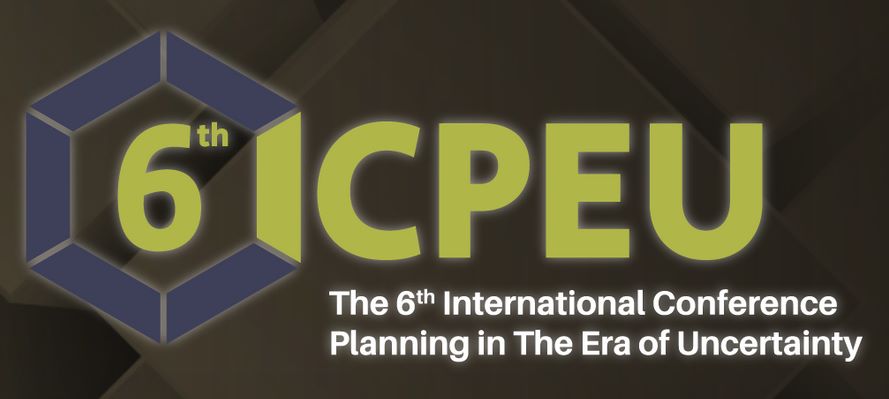Comparison of Formwork use in Building X Project in Surabaya City
DOI:
https://doi.org/10.21776/civense.v6i2.411Keywords:
Value Engineering, Formwork, Column, Beam and PlateAbstract
The Value Engineering method is a method that analyzes the problems of a project through a systematic and organized approach by eliminating unnecessary costs without reducing the function, appearance, quality, and reliability of the project. The object x building, which has an estimated project value of IDR 42,812,329,371 in structural work. With the estimated value of the work costing a lot, it is, therefore, necessary to make efforts to streamline costs by using the value engineering method; this study aims to choose an alternative material for it. This research method uses a Pareto chart to find the highest work value. The results of this study indicate that the beam work is priced at IDR 15,088,457,899, floor plate work of IDR 12,530,471,281, column work of IDR 10,228,438,679. The results of the analysis of alternative structural calculations using semi-system formwork and full system formwork, which initially used conventional formwork, were simulated using alternative 1, namely semi-system formwork,k and by using alternative two full system formwork. The two alternatives are applied to column, beam and floor plate formwork. So, for this building, it is recommended to replace formwork because the conventional formwork used in this building incurs a large enough price, it is necessary to save on beam parts, and it is recommended to use full system formwork because the cost of beam formwork using full system formwork is IDR 134,950 per square meter. For the floor plate formwork, it is recommended to use a full floor plate formwork system because the cost per square meter is IDR 202,360. And for columns, it is recommended to use full system formwork because the cost of column formwork if using full system formwork is IDR 115,290. And from the use of all the full-system formwork for structural work, a total cost of IDR 40,312,992,291.32.
References
A. Mahmudah, “Analisis Alternatif Pembagian Zona Pekerjaan Bekisting Dari Segi Biaya Dan Waktu Pada Proyek Pembangunan Rumah Susun Tingkat Tinggi Wisma Atlet Blok D 10-3 (Tower 6) Kemayoran Jakarta,” Universitas Mercu Buana, 2018.
A. R. A. Parani, “Analisis Perbandingan Efisiensi Penggunaan Metode Bekisting Konvensional Dengan Metode Bekisting Semi-Sistem Perkuatan Besi Hollow Pada Proyek Hotel Ibis Surabaya.” University of Muhammadiyah Malang, 2018.
G. M. Sai and A. Aravindan, “A comparative study on newly emerging type of formwork systems with conventional type of form work systems,” Materials Today: Proceedings, vol. 33, pp. 736–740, 2020.
A. Ng, R. D. Wirahadikusumah, and B. Hasiholan, “Kajian Good Practice Penerapan Value Engineering pada Industri Konstruksi Indonesia,” no, vol. 1, pp. 20–21, 2021.
R. K. Ngantung, F. J. Manoppo, and C. D. E. Kandou, “Penerapan Value Engineering Dalam Upaya Meningkatkan Efisiensi Biaya Proyek Pada Pembangunan Gedung Dprd Sulawesi Utara,” Jurnal Ilmiah Media Engineering, vol. 11, no. 1, 2021.
D. Younker, Value engineering: analysis and methodology, vol. 30. CRC Press, 2003.
A. Shrivastava, D. Chourasia, and S. Saxena, “Planning of formwork materials,” Materials Today: Proceedings, vol. 47, pp. 7060–7063, 2021.
H. S. Pratama, R. K. Anggraeni, A. Hidayat, and R. R. Khasani, “Analisa perbandingan penggunaan bekisting konvensional, semi sistem, dan sistem (PERI) pada kolom gedung bertingkat,” Jurnal Karya Teknik Sipil, vol. 6, no. 1, pp. 303–313, 2017.
A. Muis and T. Trijeti, “Analisis Bekisting Metode Semi Sistem dan Metode Sistem Pada Bangunan Gedung,” Konstruksia, vol. 4, no. 2, 2013.
I. Wiguna, I. G. A. A. Putera, and G. A. P. C. Dharmayanti, “Analisis Penghematan Biaya Penggunaan Bekisting Pelat Lantai Konvensional Model Panel Pada Bangunan Tipikal (Studi Kasus Pada Proyek Amartha Residence),” Jurnal Spektran, vol. 6, no. 1, pp. 59–64, 2016.
M. T. Al-ashwal, R. Abdullah, and R. Zakaria, “Traditional formwork system sustainability performance: experts’ opinion,” in IOP Conference Series: Materials Science and Engineering, 2017, vol. 271, no. 1, p. 12108.
S. Li and S. Yin, “Research on the mechanical properties of assembled TRC permanent formwork composite columns,” Engineering Structures, vol. 247, p. 113105, 2021.
Sugiyono., “Metode Penelitian Kuantitatif, Kualitatif dan R&D.,” Bandung: Pt. Alfabet, 2016.
T. A. Gumanti, Metodologi Penelitian Pendidikan. Jakarta: Mitra Wacana Media, 2016.
Downloads
Published
How to Cite
Issue
Section
License
Copyright (c) 2023 Eza Agriansyah, Eko Andi Suryo, Eva Arifi

This work is licensed under a Creative Commons Attribution-NonCommercial 4.0 International License.
Authors who publish with this journal agree to the following terms:
Authors retain copyright and grant the journal right of first publication with the work simultaneously licensed under a Attribution-NonCommercial 4.0 International License that allows others to share the work with an acknowledgement of the work's authorship and initial publication in this journal.
Authors are able to enter into separate, additional contractual arrangements for the non-exclusive distribution of the journal's published version of the work (e.g., post it to an institutional repository or publish it in a book), with an acknowledgement of its initial publication in this journal.
Authors are permitted and encouraged to post their work online (e.g., in institutional repositories or on their website) prior to and during the submission process, as it can lead to productive exchanges, as well as earlier and greater citation of published work (See the Effect of Open Access).














